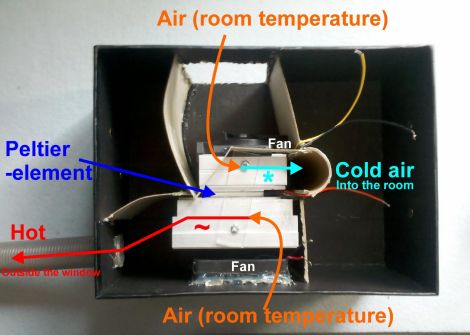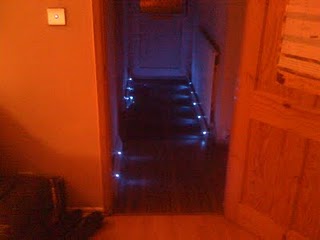It’s summer in Germany, and [Valentin’s] room was getting hotter than he could handle. Tired of suffering through the heat, and with his always-on PC not helping matters any, he decided that he must do something to supplement his home’s air conditioner. The result of his labor is the single room poor man’s A/C unit you see above.
He had a spare Peltier cooler sitting around, so he put it to good use as the basis for his air conditioning unit. He sandwiched it between a pair of CPU heatsinks before cramming his makeshift heat pump into a shoe box. Warm air is drawn into the box and across the cold side of the Peltier before being blown back into the room. On the hot side of the box air is also pulled in by a fan, drawing heat away from the unit before being exhausted outdoors through his window.
While he hasn’t quantified the machine’s cooling power, he seems quite happy with the results. We have a spare Peltier kicking around here somewhere, perhaps we should try building one just for grins.

















